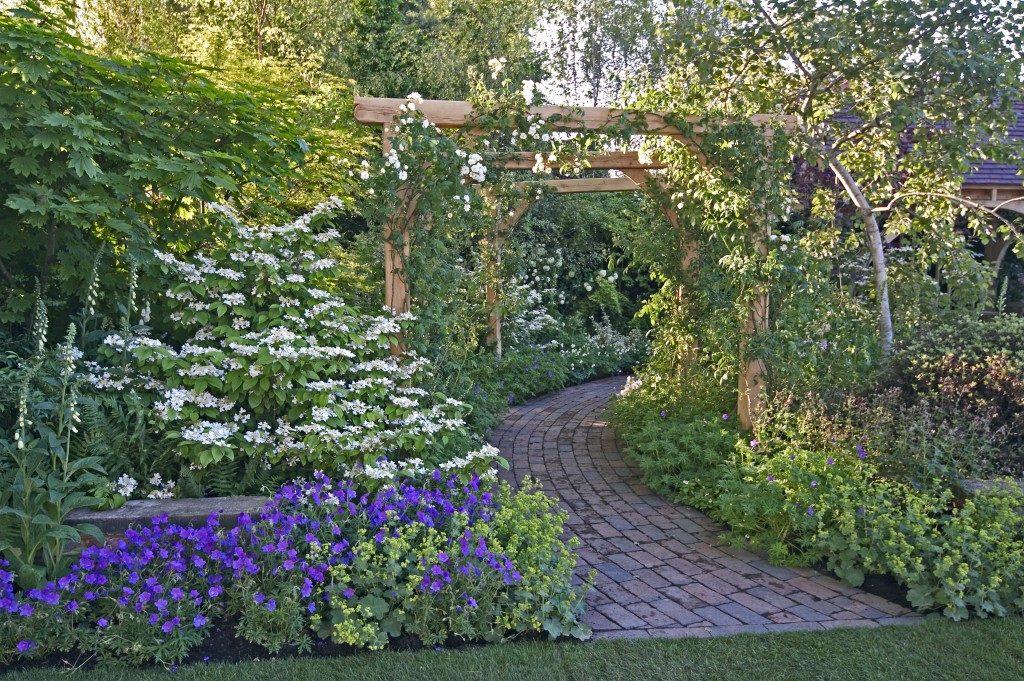Cottage gardens are your best bet if you want an outdoor space that’s more relaxed and laid-back. Unlike formal gardens, these don’t require meticulous details. No strict spacing of plants. Less emphasis on symmetry and straight-cut lines and forms. No need for perfect maintenance of hedges. It’s essentially a freeform style. Yet, it’s no easier to pull off than formal gardens. It’s precisely this free, unrestrained design that makes it hard to achieve. In fact, in many instances, it can go just borderline messy and untamed. So even if this garden style is technically freeform, you can refer to these guidelines for achieving that neat, yet effortless look for the outdoor space:
Vary plants’ heights and textures.
When you look closely at the cottage gardens you see on Pinterest, they’re visually appealing, despite looking unruly because they have the right mix and match of plant characteristics. The plants may seem random, but they’re grouped according to certain elements. For the most part, the height and the texture. So to make the style work for you, focus on these features. Place the shorter plants along and near the garden pathways and then the taller ones at the back. This will guide the eyes to move up and around, avoiding that flat, static view.
Introduce different textures, too. You can have fine-textured plants, those that have small leaves or blossoms. These offer a light and airy atmosphere to their space, that’s why they’re best placed in small corners of your garden. On the other hand, you may also have bold-textured greenery. These are attention-grabbers because of their big leaves and blossoms. They’re heavier in terms of visual weight, so they can tighten garden zones easily. When you have a good mix of these two plant textures, your cottage garden will look balanced, instead of unkempt.

Add a focal point.
To reduce the confusion in cottage gardens, make sure to have a solid point of interest that’s emphasized in the space. This element will easily catch the eyes of people walking into the area, thus removing distractions altogether. You have lots of options for a focal point. Plant species are one. If you have a group of plants that have bold-colored blooms, they’re a good candidate for an interesting focal point. Keep some negative space near it and clear up the sightlines towards it. If you want a diversion from the nature elements though, you can install some man-made features, like water fountains, arbors and lattice, or an outdoor fire pit. Salt Lake City-based interior designers share that a seating area near these elements can all the more draw attention to it, as it will entice people to lounge around and relax.
Don’t neglect the backdrop.
The backdrop of all the elements in your garden will give it an anchor and define the space better. It helps in making the entire thing look deliberate and not random. A nice solid fence can be a good backdrop. The neutral color will highlight the garden features better. You can also furnish your existing walls with rustic elements, say wooden slats or brick stones. These hard textures can complement the soft feel of your plants. If you want a nature-inspired backdrop, but not necessarily plants, you can use bamboo or peeled reed privacy screens. If you can fill the perimeter of your yard with these materials mentioned, better. It will offer a sense of continuity throughout the space, tying all the ‘random’ plants and elements you placed in the cottage garden.
Create Your Cottage Garden
Cottage gardens, although freeform in style, aren’t necessarily easier to achieve than all the other garden types. So if you’re not sure how to pull it off, begin with these ‘rules’ in mind.




